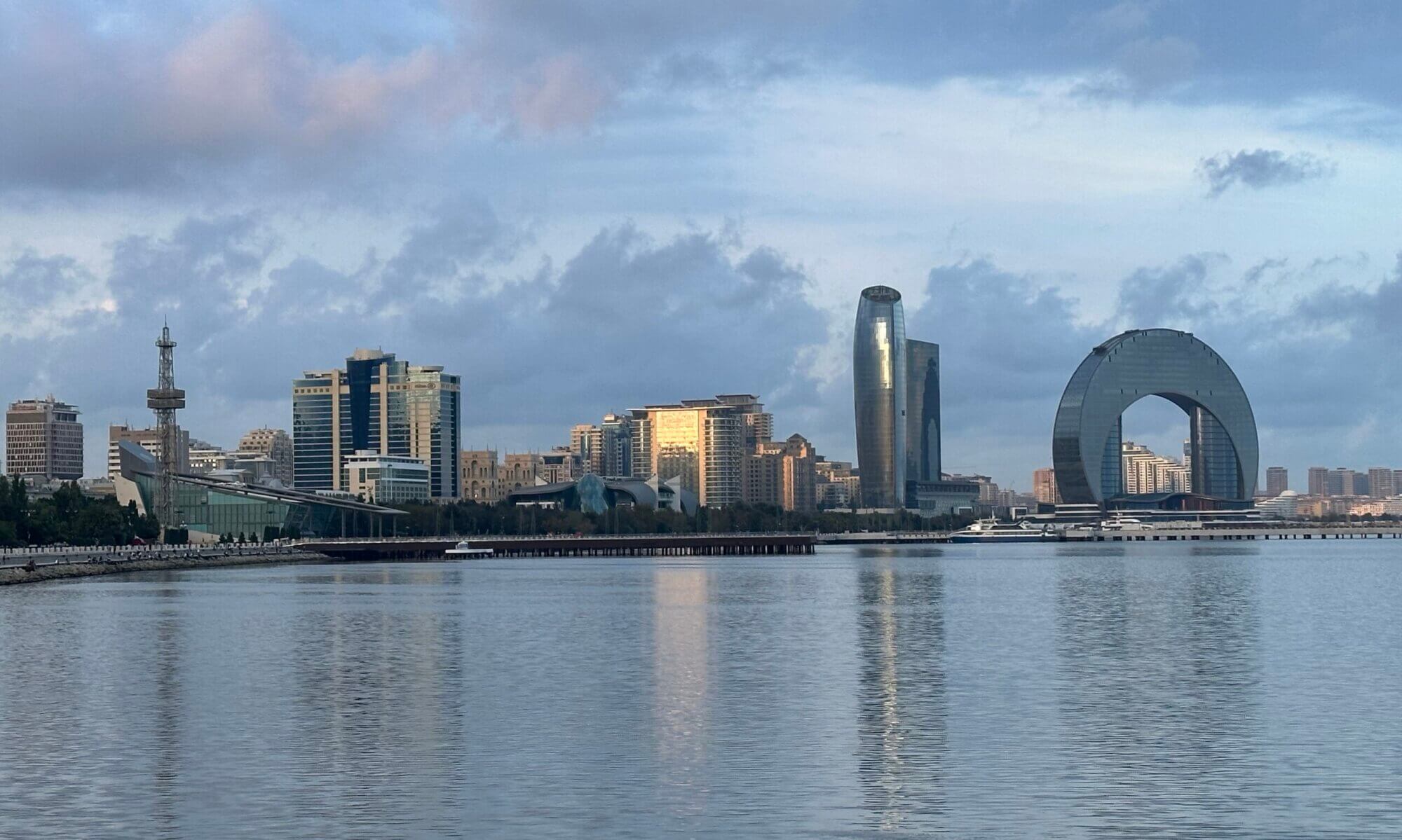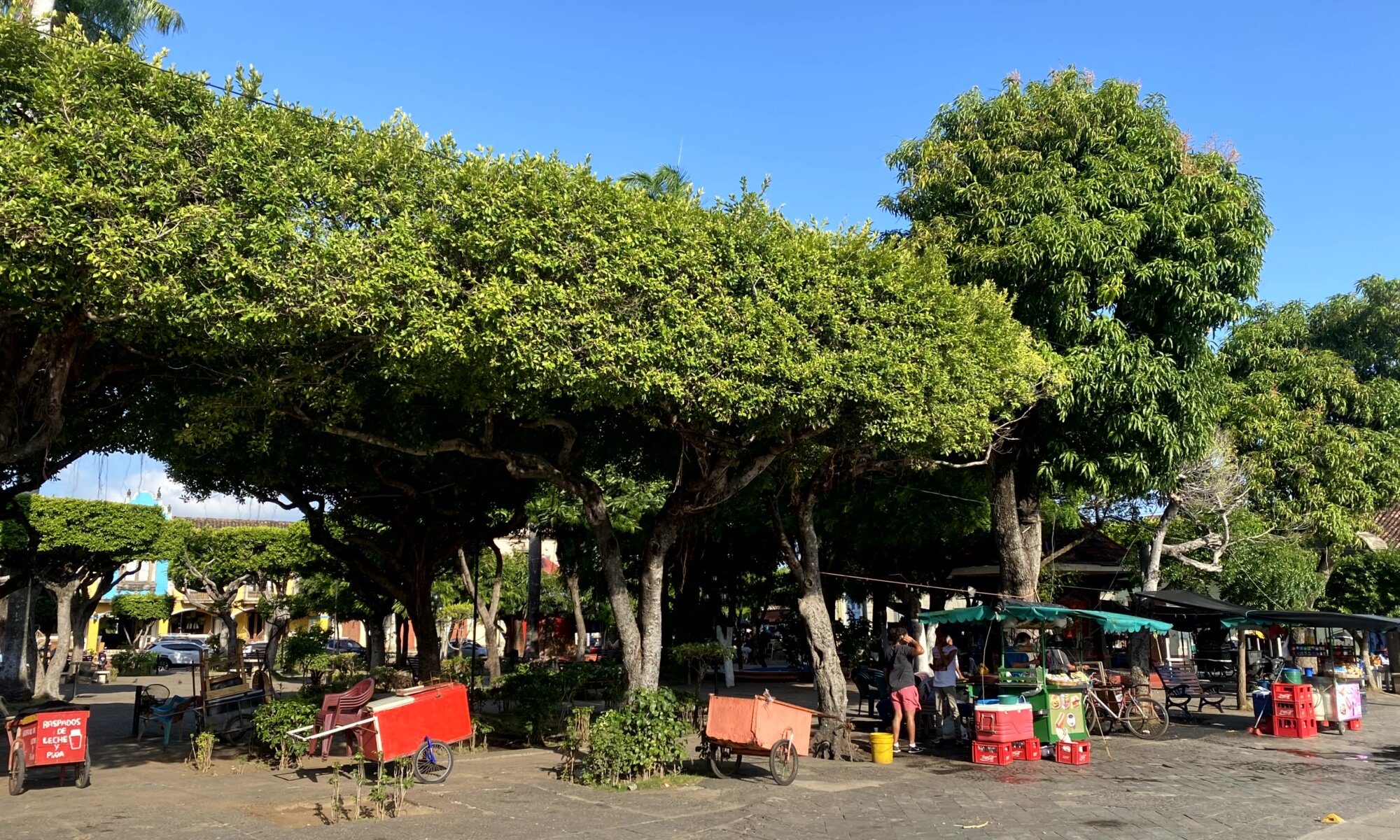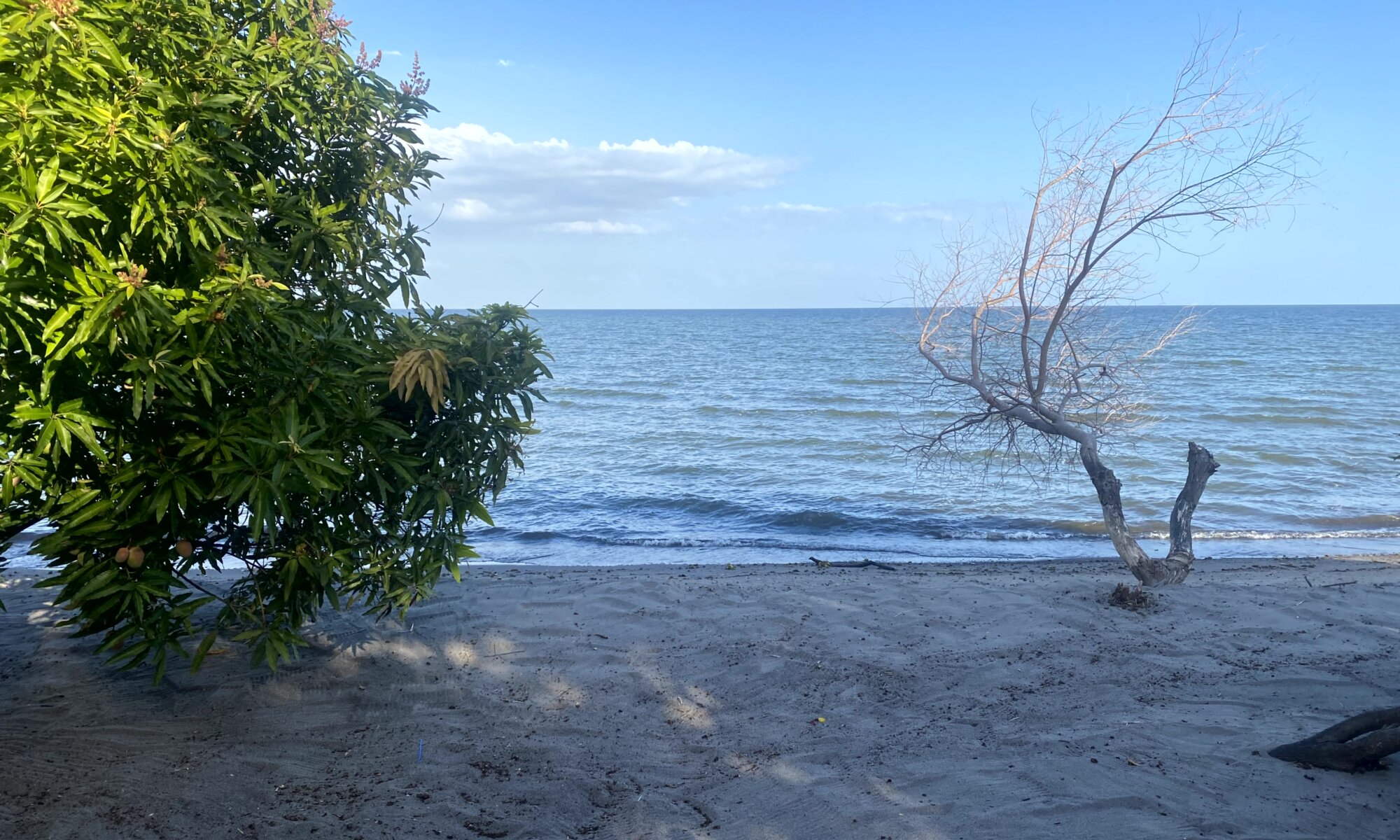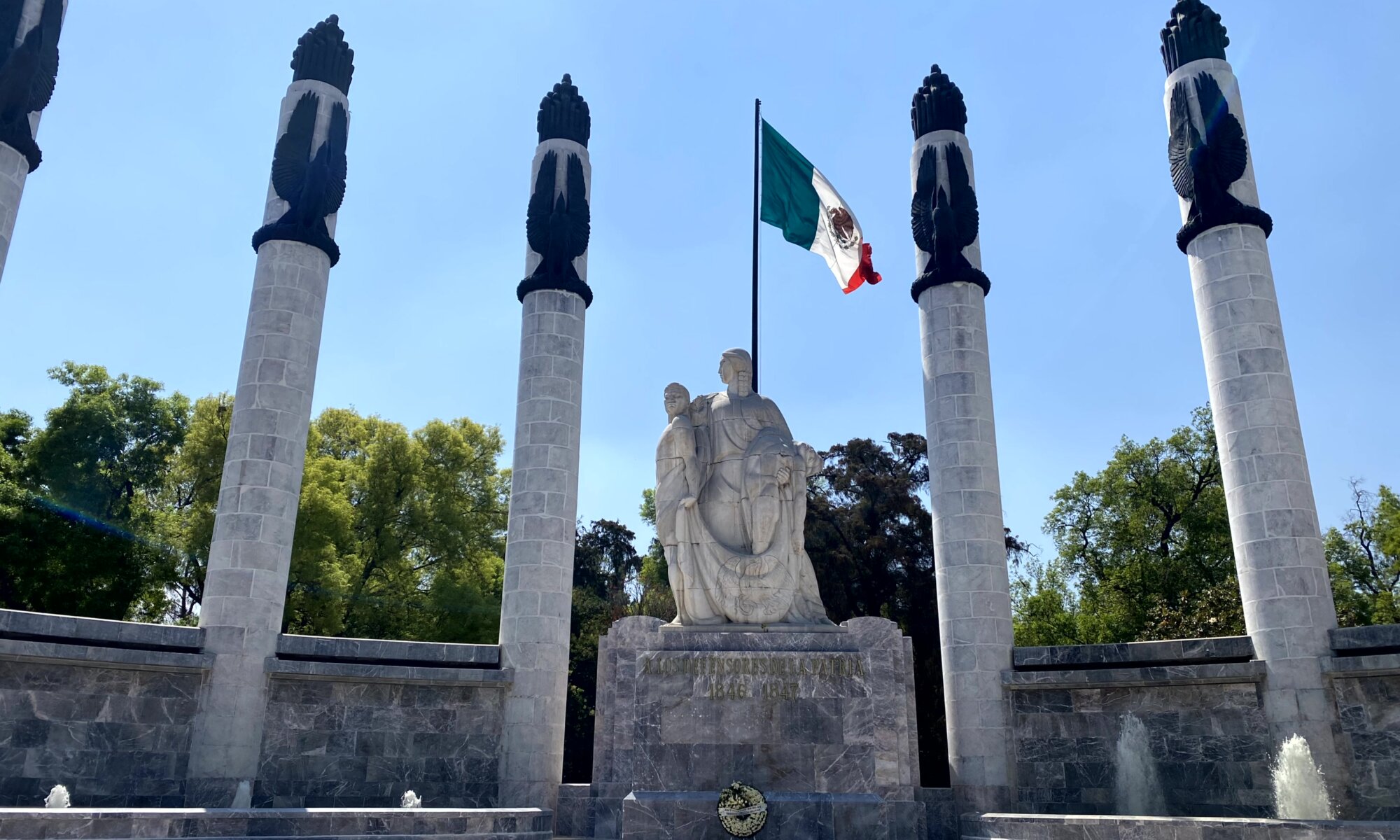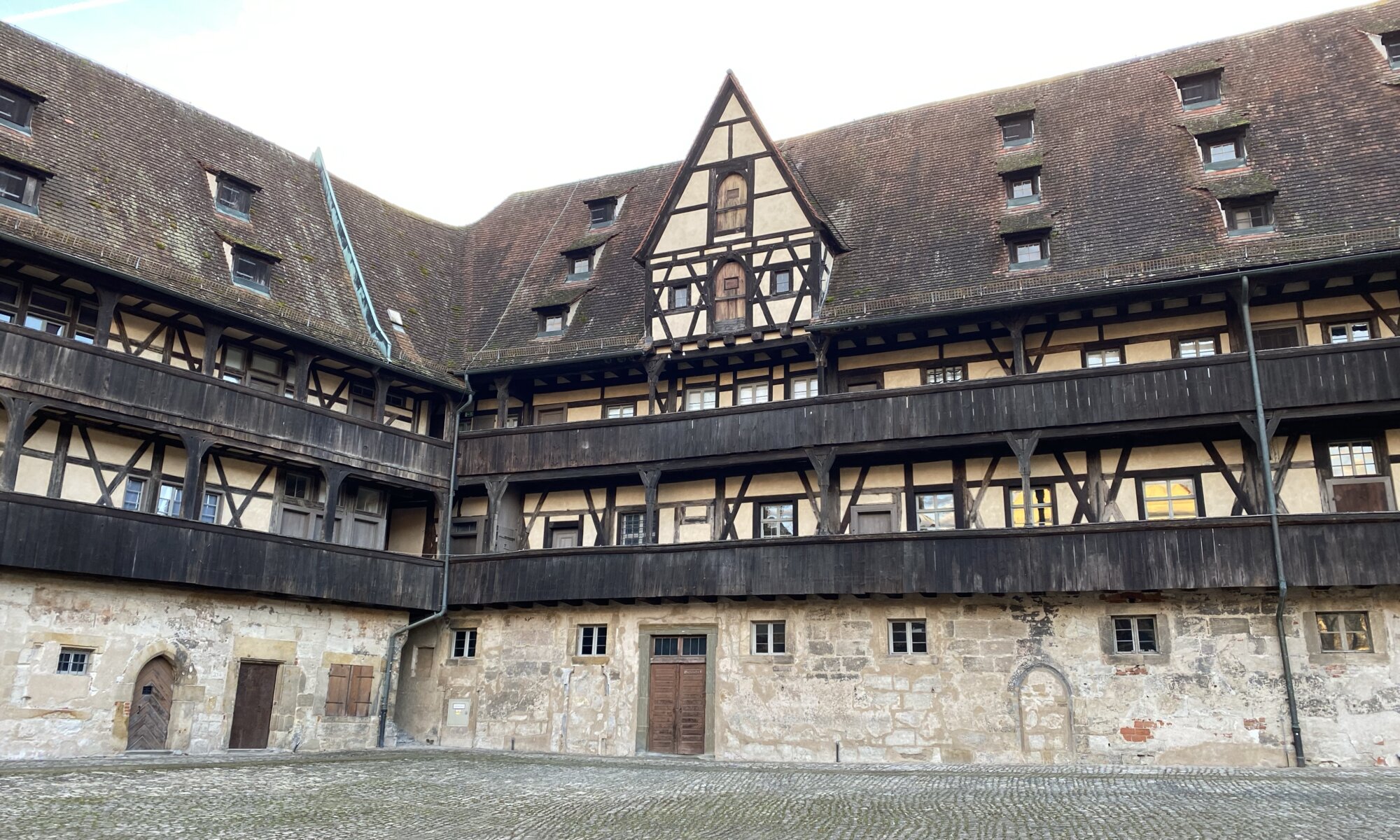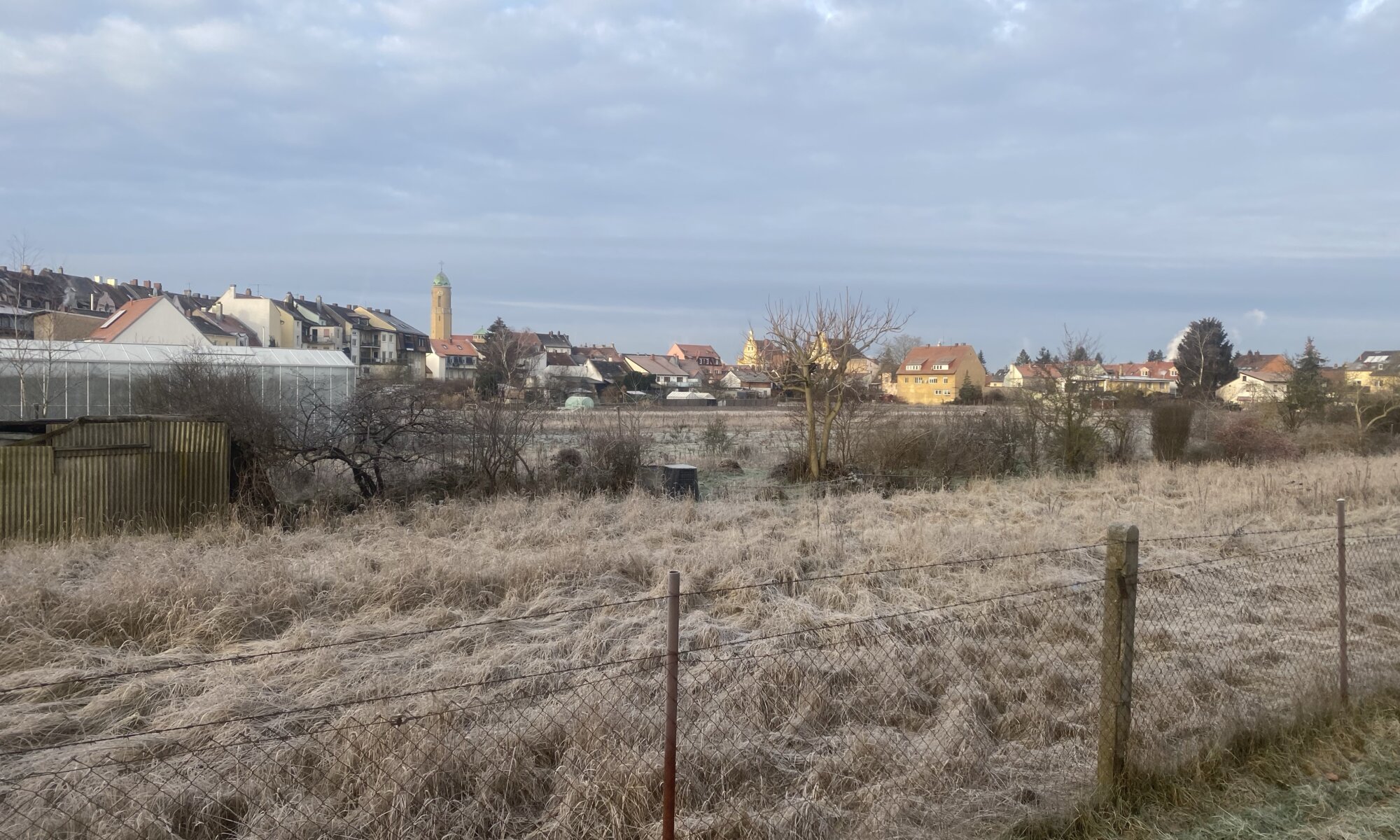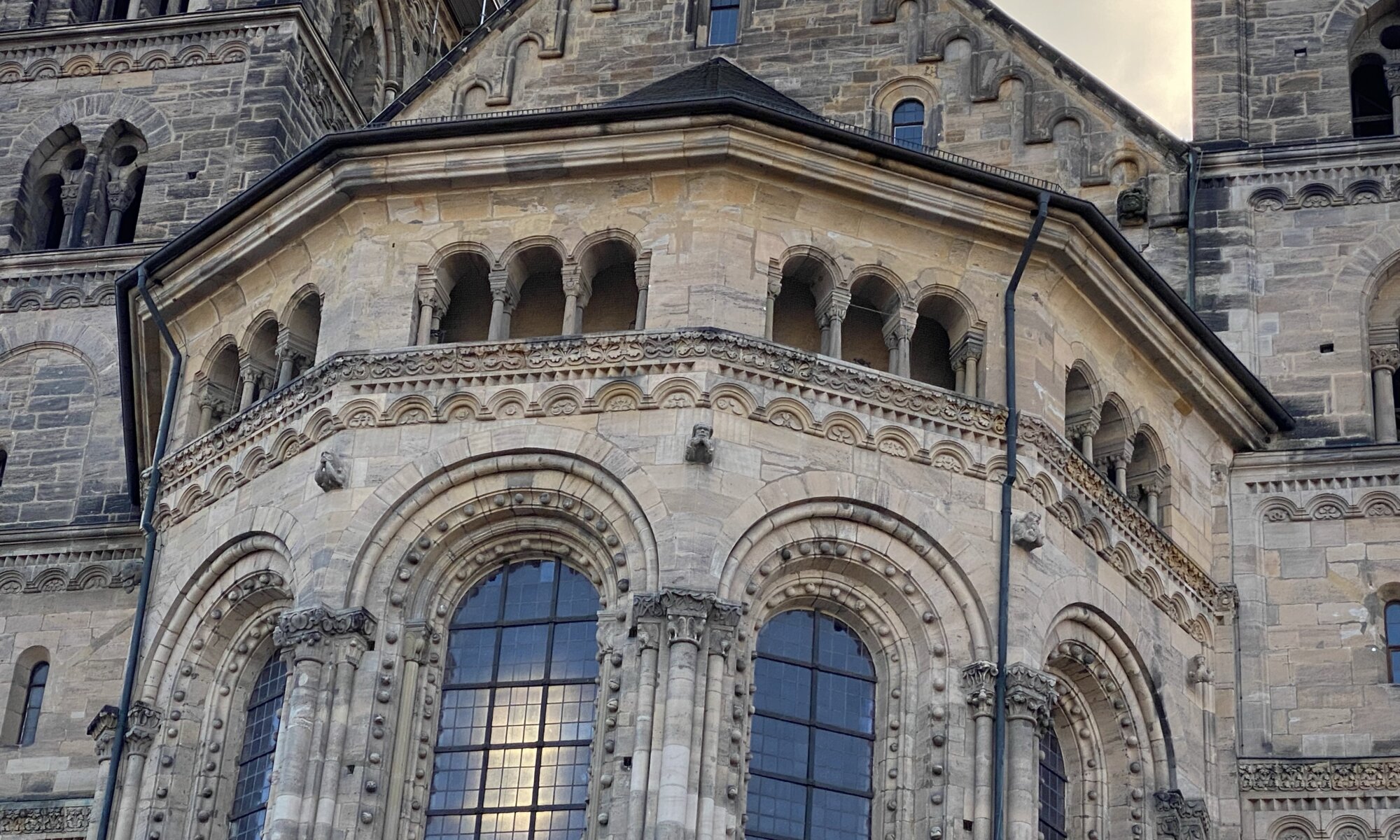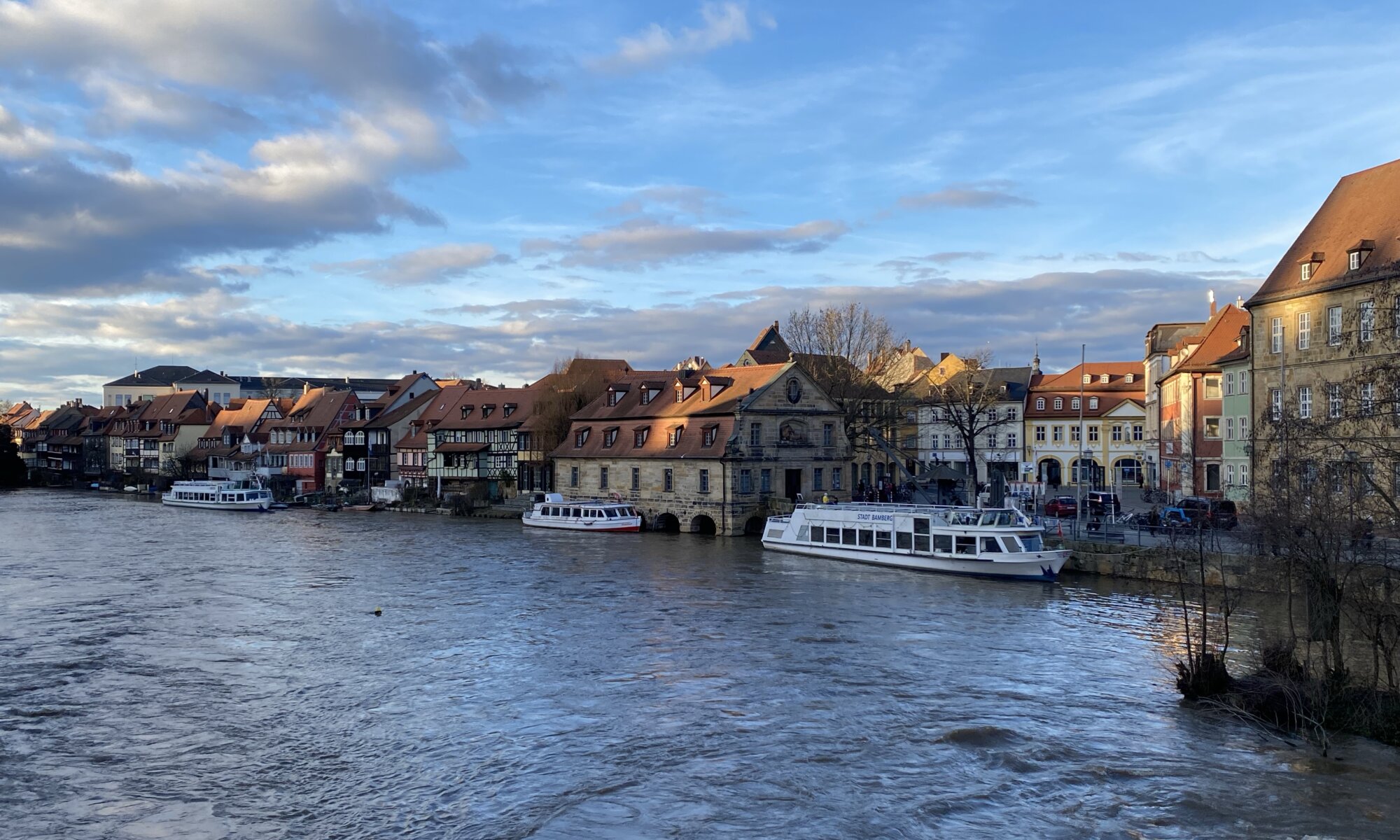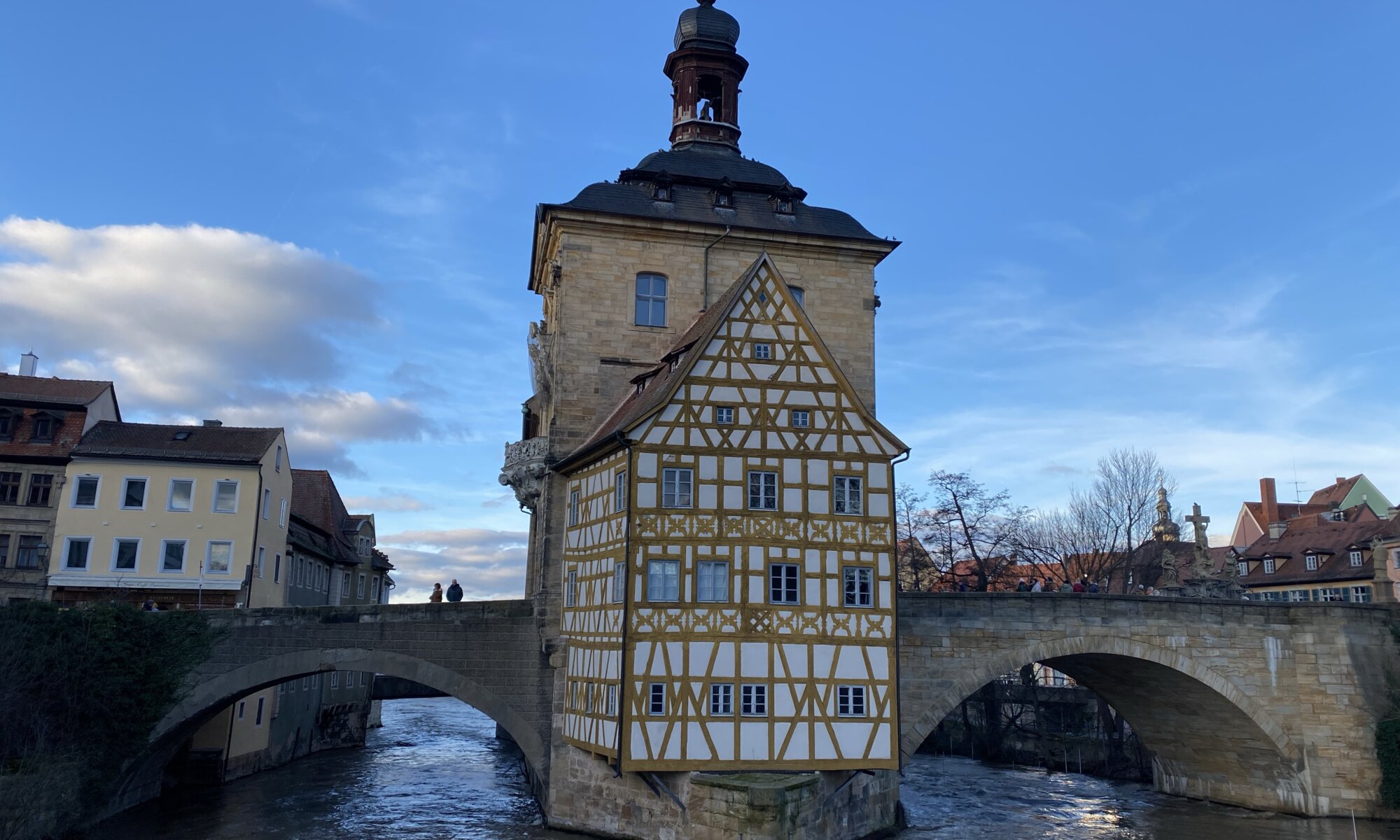People sitting on benches chatting, children chasing pigeons, merchants selling their products on a small market, horse carriages waiting for passengers to jump in. The Parque Central of Granada, Nicaragua, is as usual in colonial cities the heart of the town, the living room, the meeting place. Bars, restaurants and hotels surround this place which makes a good starting point for a visit to the city. Fountains and statues, dedicated to national poet Rubén Darío, to the country Nicaragua and to mothers in general decorate the place.
Continue reading “Parque Central”Lago Cocibolca
The Cocibolca or Lago de Nicaragua is the second-largest inland lake in Latin America after Lake Titicaca in Bolivia and Peru. It stretches from the border to Costa Rica in the south to the city of Granada in the north. The water of the lake runs through the Río San Juan into the Caribbean Sea and this river can also be used by larger ships. That was discovered in 1525 by the Spanish, but also in the 17th century by pirates attacking the city of Granada.
Continue reading “Lago Cocibolca”Chapultepec
In the east of Ciudad de México you’ll find Chapultepec, the hill of the grasshoppers. It is a large garden and an important recreation zone for the people living in this vast capital city. It was a settlement area of the early cultures of the Toltecs and Aztecs. Today it contains a lake with many restaurants, a zoological garden, a botanical garden, a castle and lots of museums – including the famous Museo Nacional de Antropologia.
Continue reading “Chapultepec”Zócalo
Do you remember the opening scene of Spectre by Sam Mendes? When Daniel Craig as James Bond hunts terrorists on the Día de los Muertos in Ciudad de México? The filming location was the Plaza de la Constitución, most often referred to as the Zócalo. It is the main square of the city and a tradition of colonial times: Latin American cities all have such a central square (that is most often called Plaza de Armas). In CDMX this place once hosted a memorial for Spanish king Carlos IV during colonial times which was removed after the Mexican independence and only the base or socket (Spanish: Zócalo) remained.
Continue reading “Zócalo”Alte Hofhaltung
Next to the cathedral of Bamberg you can find the Alte Hofhaltung, the residence of the bishops. It was built in the 15th century CE but the area was used by rulers much longer than that: the direct predecessor was an imperial palace (a so called Kaiserpfalz) built by Henry II, Holy Roman Emperor. Today it is a beautiful, quiet place and you can relax in its inner courtyard.
Continue reading “Alte Hofhaltung”Gärtnerstadt
The city center of Bamberg is a UNESCO world heritage site since 1993. And that is well-deserved because of the beautiful historic buildings in the old town (Bergstadt and Inselstadt) and the location along river Regnitz. After a short walk through the streets and over the many bridges you can only confirm this. But there is another part that belongs to the UNESCO world heritage site that is lesser known: the Gärtnerstadt.
Continue reading “Gärtnerstadt”Odeon
Normally, when a multiplex cinema opens in a German city tough times start for the old, small arthouse cinemas. In Bamberg this is different: the multiplex cinema went into bankruptcy and the small cinemas survived. One of them is the Odeon not far from the main railway station. It is charming small cinema and watching a movie there is like travelling in time.
Continue reading “Odeon”Bamberger Dom
You can’t overlook the cathedral of Bamberg with its two high towers. It is part of the Bergstadt city quarter and located on a mountain next to river Regnitz. The Bamberger Dom named St. Peter und St. Georg is special, not only because of its Romanesque style. It is the only burial site of a pope in Germany and north of the Alps. While popes are typically buried at Roma, pope Clement II – who was formerly bishop of Bamberg – was buried within this cathedral.
Continue reading “Bamberger Dom”Little Venice
The city of Bamberg is beautifully located at the 64 km long river Regnitz, created from the confluence of Pegnitz and Rednitz near Fürth and running into river Main. At Bamberg two river arms form an island which contains important parts of the city and water mills were used in different parts. The river was also important to transport goods, as you can still today see at the harbor with an ancient crane.
Continue reading “Little Venice”Surrounded by water
What is the most important icon of Bamberg? There is only one correct answer: it is the old town hall building (Altes Rathaus) built on posts within the river Regnitz. Not only tourist books use this place is the one and only image of the city – also companies showing their connection to Bamberg use it massively. The impressive building is partly half-timbered and marks the border between the religiously ruled (Bergstadt) part of the city and the secular Bamberg (Inselstadt).
Continue reading “Surrounded by water”